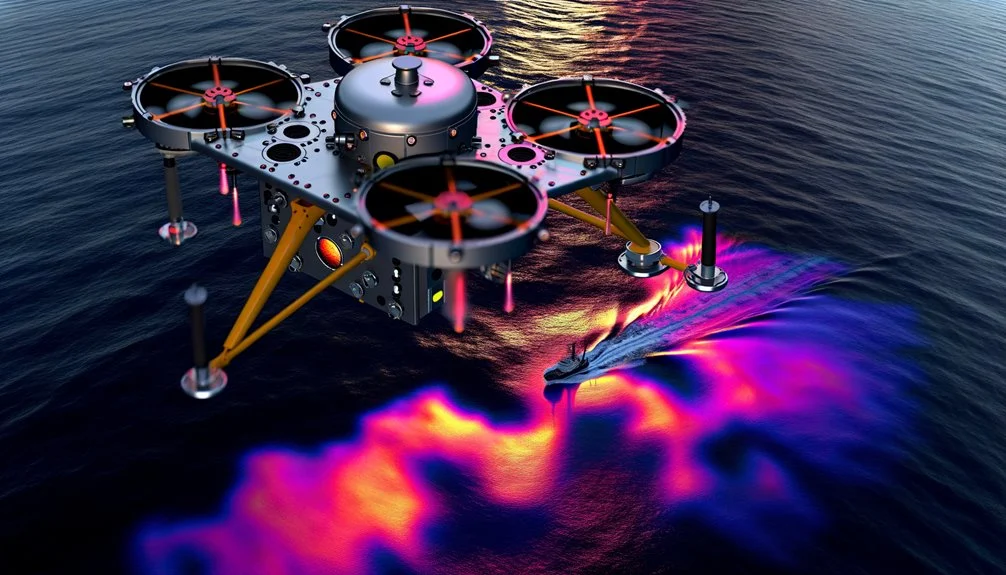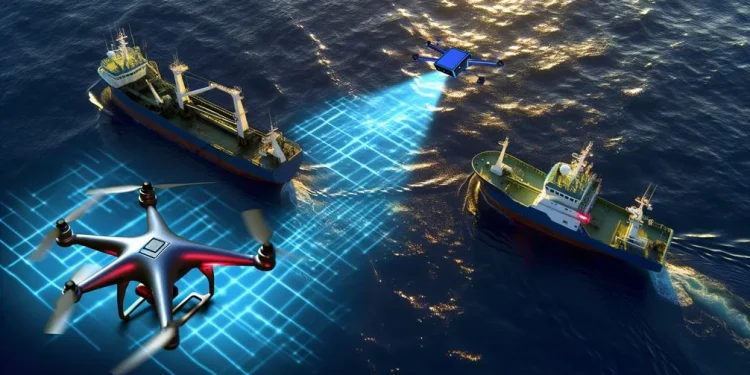Artificial intelligence is winning the battle against illegal fishing operations worldwide. AI systems simultaneously monitor millions of ocean kilometers using satellite imagery, vessel tracking, and underwater sensors. Machine learning software analyzes vessel movements and identifies suspicious patterns, even when ships disable their tracking devices. This technology helps protect $25 billion in annual fishing revenue and preserves marine ecosystems. The future of ocean conservation depends on these advancing surveillance capabilities.

As illegal fishing continues to threaten marine ecosystems worldwide, artificial intelligence has emerged as a powerful tool in detecting and preventing these activities. AI systems now integrate multiple surveillance technologies, including satellite imagery, vessel monitoring systems, and coastal radars, to create a thorough detection network that operates around the clock.
The technology processes vast amounts of data from diverse sources, including underwater hydrophones that detect vessel sounds and even seabirds equipped with radar detectors. AI algorithms can recognize patterns that suggest illegal fishing, such as when vessels operate in restricted areas or switch off their tracking devices to avoid detection. New machine learning software anticipates potential illegal activities by analyzing historical fishing data and current vessel movements.
Modern AI systems can monitor millions of square kilometers of ocean simultaneously, far exceeding human capabilities. They’re particularly effective at analyzing satellite imagery to identify vessels, even when they’re partially hidden by cloud cover. This technology has transformed the approach to fighting illegal fishing from reactive enforcement to proactive prevention. The global fishing industry loses approximately $25 billion annually due to illegal fishing operations.
AI-powered drones and unmanned aerial vehicles (UAVs) now provide real-time surveillance data at a fraction of the cost of traditional methods. These systems work alongside innovative robotic platforms that use advanced sensors to detect underwater activity. The technology is especially valuable in regions like Asia and Africa, where illegal fishing is most prevalent.
One of AI’s most significant advantages is its ability to process real-time data from multiple sources simultaneously. When vessels attempt to “go dark” by turning off their Automatic Identification System (AIS) transponders, AI can still track them using alternative data sources. The system analyzes information from satellite imagery, radar signals, and weather patterns to maintain surveillance.
The technology’s effectiveness stems from its ability to integrate diverse data streams and identify suspicious patterns automatically. For instance, AI can detect when a vessel’s reported position doesn’t match its satellite imagery location or when it displays unusual movement patterns.
This thorough approach has created a more robust defense against illegal fishing activities, helping to protect marine resources for future generations.
Conclusion
Persistent poachers prowl the planet’s seas, but powerful AI programs are pushing back. Today’s technology tracks suspicious ships, spots illegal nets, and maps marine movements in real-time. While criminals continue their crafty operations, artificial intelligence is getting smarter and faster at finding them. This high-tech hunt offers hope for protecting precious ocean resources and preserving marine populations for future generations.


